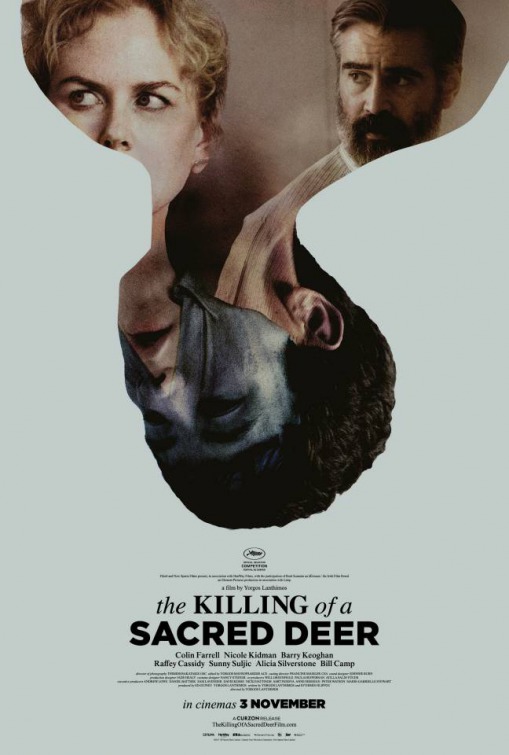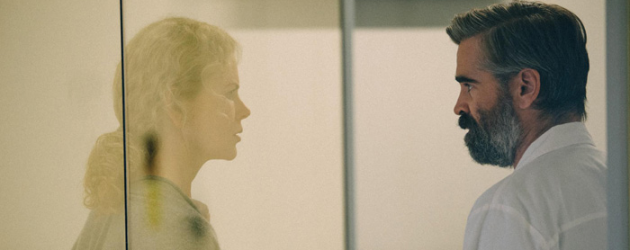
Director Yorgos Lanthimos has a unique, detached way having his characters act and speak. All the human nuance and imperfection is stripped away, and each character talks in a very formal blunt manner that communicates a single emotion wholeheartedly. Now this technique works fantastically when played for comedy in its abstract yet obtrusive honesty, as he did in THE LOBSTER, but THE KILLING OF A SACRED DEER shows it works even better when used to give a sense of unease in a psychological horror.
Because while myopic delivery of an important matter is funny, that singular focus applied to small talk leads to fear, the idea that something is brewing underneath – ignored, just waiting to explode. So, when Steven (Colin Farrell), a resolute surgeon, walks the corridors after performing open heart surgery discussing wristwatches with his anesthesiologist Matthew (Bill Camp), something feels wrong. As he sits around the dinner table with his wife Anna (Nicole Kidman), teen daughter Kim (Raffey Cassidy), and youngest son Bob (Sunny Suljic) as they discuss their beautiful hair, we only can only wait until nature sweeps away this Utopian abomination. And a visualization of Steven and Anna’s strange but not immoral sexual rituals do not provide relief, but only confirmation of the unease.
That unease takes human form in Martin (Barry Keoghan), a young neighbor who Steven has been mentoring as he is a friend of Kim. Martin’s father had been lost on Steven’s operating table ten years ago, and despite the current niceties, Martin has a prophecy for Steven: soon all his family will become paralyzed from the waist down, then they will refuse to eat, then they will begin to bleed from their eyes, then they will die. And all of this seems to come reality as Bob finds himself unable to use his legs. Martin views himself as Artemis, who forced Agamemnon to sacrifice Iphigenia after Artemis stilled the winds to punish Agamemnon for entering the grove and slaying a deer.
This is delivered clinically, like a diagnosis, and fighting the diagnosis’ existence is never a thought for the characters. They resist Martin’s actions, and ask him why he is doing this, but the inevitability of the prophecy feels Greek. The dialogue, cinematography, and story can best be described as clinical and Greek. We aren’t watching real people deal with human problems like you would normally see in a film. These are objects being used in a Greek tragedy to demonstrate the power and consequences of sin.
For this reason, it’s hard to judge the actors on usual merit. They aren’t supposed to be real, they are supposed to be functional, bestowing on the audience fear, but more importantly unease. Where the film falters is in its pacing. At 121 minutes it takes patience to simmer in the uncomfortable stew Lanthimos has created for you. There is no hope, just the tragedy of humans. It’s hard, but if you are welcoming to it, THE KILLING OF A SACRED DEER may just be the right kind of psychological horror for you.








